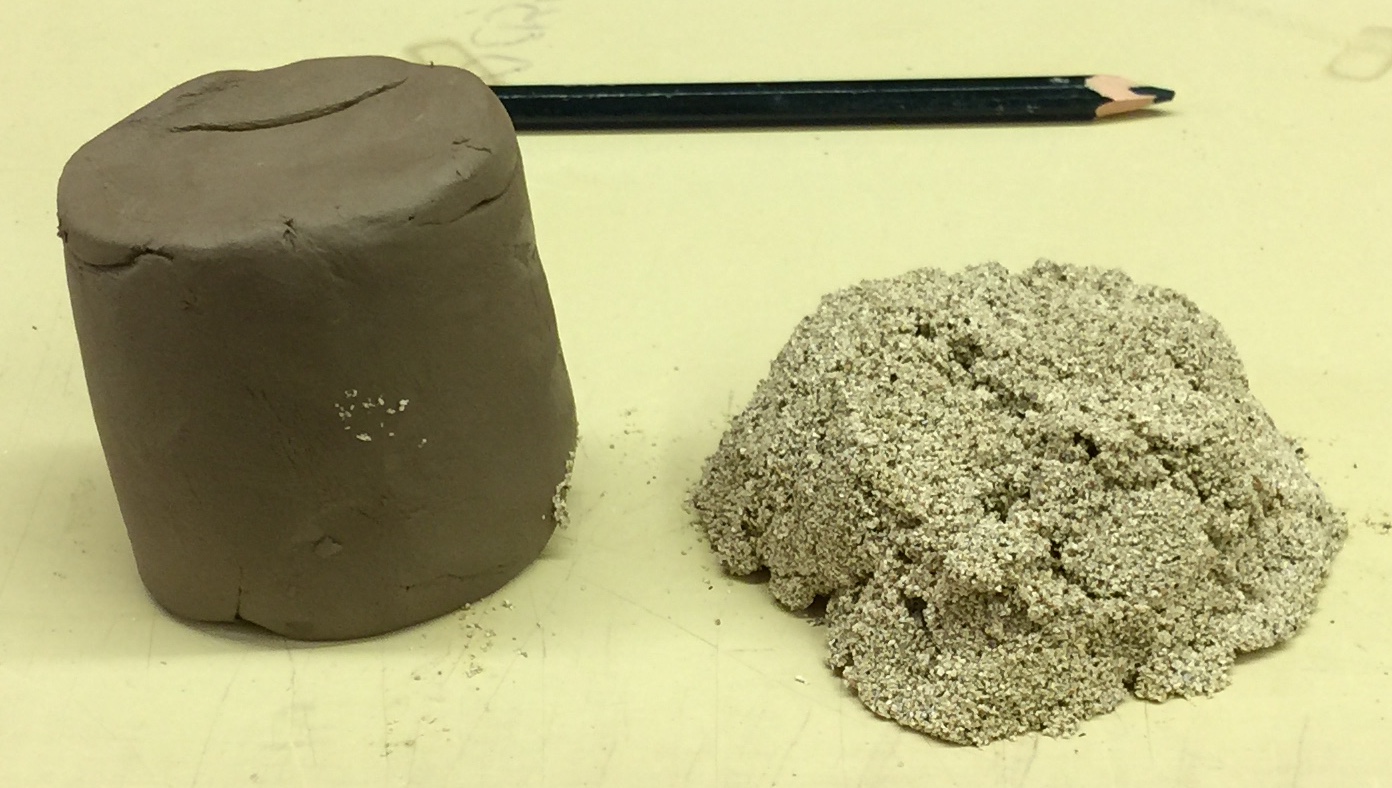How can Craft Crank sculpture clay be so plastic and smooth with this much grog?
The super-smooth clay on the left is "Industrial Crank" from Potclays in the UK, I have removed the grog (our test insight-live.com/glossary/302">code number L3868). First I did our standard tests on that body, then I dried some, slaked it in water, screened the grog out and then dewatered the remaining clay to plastic form. The grog yielded weighed the same as the clay portion of the recipe yet this body is known for amazing workability and toughness! How is that possible with so much aggregate in the recipe? The base clay body is extremely smooth, sticky and highly plastic. Mixtures of just ball clay and feldspar (e.g. 75:25) will yield this type of material, some ball clays will produce as little as 6% drying shrinkage using this ratio. The grog they use is also special: The particles have angular shapes and a narrow range of sizes, from about 35 mesh to 70 mesh (most is of the coarsest size). This narrow range of sizes means dramatically less particle surface area. These factors produce much less disruption of the plastic properties of the base clay. How could you make a body like this? Slurry up about 75% ball clay and 25% feldspar and wedge the grog into that.
Pages that reference this post in the Digitalfire Reference Library:
Potclays, Drying Ceramics Without Cracks, Adding 10% STKO 22 S grog to a smooth stoneware does this, A vitreous sculpture clay. Vitreous enough for functional ware!, Tiles Cracking, Grog, Sculpture, Cracking of Clays During Drying

This post is one of thousands found in the Digitalfire Reference Database. Most are part of a timeline maintained by Tony Hansen. You can search that timeline on the home page of digitalfire.com.
